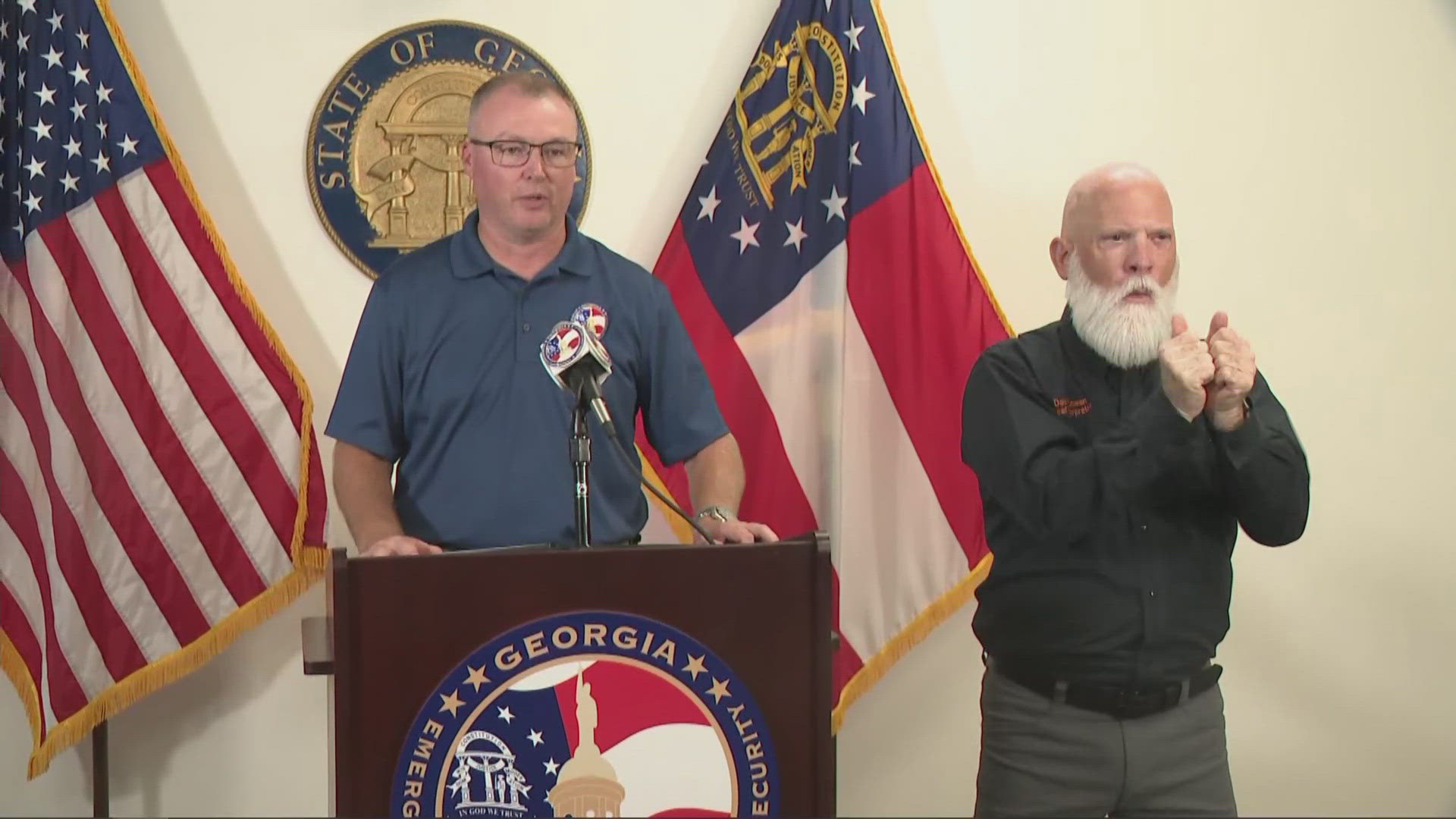ATLANTA — Georgia Gov. Brian Kemp declared a state of emergency on Tuesday in anticipation of Tropical Storm Helene, which is expected to become a major hurricane in the Gulf of Mexico before making landfall late Thursday.
The executive order will help with immediate resource assistance in the aftermath of the storm. The state of emergency impacts all 159 counties in Georgia.
The state of emergency also means that county emergency management agencies and Georgia Emergency Management indicate there will be a need for assistance in impacted areas.
When Helene makes landfall along Florida's Big Bend region, it is expected to strengthen to a Category 3 hurricane before hitting the sunshine state's panhandle and its remnants making its way north -- eventually into Georgia.
The tropical storm could produce heavy rainfall, storm surge and flooding in parts of Georgia.
The storm is forecast to weaken as it moves northward through the state of Georgia, but depending on its strength and track, it could have huge impacts on the area. It is forecast to still be a Tropical Storm when passing through north Georgia.
How to be prepared for Helene
Put together an emergency preparedness kit: This is the first thing on the Red Cross list to ensure your family is ready for an emergency. The kit should include a 3-day supply of water, non-perishable food, a flashlight, a battery-powered or hand-crank radio, a first aid kit, family and emergency contact info, extra cash, a map of the area and more. The Red Cross urges the importance of adding supplies to your kit based on the needs of all your family members.
Have an emergency plan: Review your evacuation zone, route and shelter locations. Plan with your family and include pets if relevant. You may have to leave quickly, so plan ahead.
Protect your home: Bring in any loose or lightweight objects that could get picked up during high winds. Also, anchor down objects that would be unsafe to bring inside. Be sure to cover all of your windows if you don't have permanent hurricane shutters, and close and board up all windows and doors with plywood.
Don't forget about electronics: Unplug all of your electronics. If you live in a low-lying area that’s flood-prone, make sure all of your electronics, perishables and valuables are off the ground. Power could be out for a long time, so purchase and charge batteries before the storm hits.
Fill the tub: If there is a big storm, your electricity may be out, and your water may stop flowing. Fill the tub and washer with water. This isn't to drink. It will be used for very important things like flushing your toilet.
Items to have ready
- Water. One gallon per person per day, for at least three days, for drinking and hygiene
- Food. At least a 3-day supply of non-perishable food
- Click here for recipe ideas featuring non-perishable foods, manual tools and alternative heating sources.
- Can opener for food -- if kit contains canned food
- Radio. Battery-powered or hand crank radio and a NOAA Weather Radio with tone alert, and extra batteries for both
- Emergency charger for mobile devices
- Flashlight and extra batteries
- First aid kit
- Whistle. To signal for help
- Face mask. To help filter contaminated air and plastic sheeting and duct tape to shelter in place
- Moist towelettes, garbage bags and plastic ties. For personal hygiene
- Wrench or pliers. To turn off utilities
- Local maps

